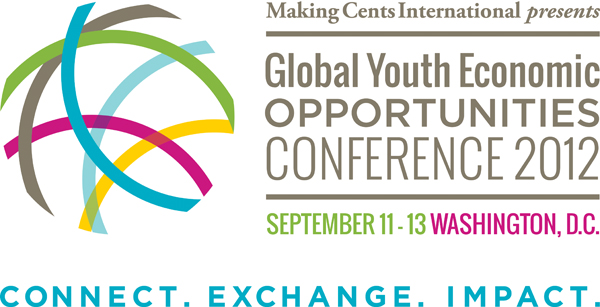Youth Economic Opportunities Conference: Are donors really ready to pay for what they say they most value? Part II
Insights from the 2012 Youth Economic Opportunities Conference
 September 11-13, 2012 | Washington, DC
September 11-13, 2012 | Washington, DC
These observations are provided by David James-Wilson (Making Cents International), an experienced youth work professional with a 25-year track record in the design and delivery of innovative youth livelihood and non-formal education services.
Both days of the Global Youth Economic Opportunities Conference have provided me with ample opportunities to get a better handle on who is willing (and able) to fund what – when it comes to donors, “scale,” and “impact.”
A hallway discussion with a major private foundation gave me considerable insight into their ongoing evolution from an “if you build it and can show it works, someone will surely scale it up” approach, to a more recent practice of giving “preparation for scale” grants toward the end of promising pilots, that builds on advice in a MacArthur Foundation funded report from MSI entitled: “Scaling Up—From Vision to Large-scale Change: A Management Framework for Practitioners.” This foundation signaled, however, that they are coming to the recognition that the next step needs to be to design scalability fully into “pilots” – answering three tough questions right from the outset: “Who will be doing the scaling?” “When are they likely going to have the capacity to scale-up?” and “What would be their main incentives for investing in scaling-up?”
This change in thinking in fact reflects a finding in the MSI report that donor-driven projects are all too often mislabeled as “pilots” ( i.e. a small version of what would ultimately be scaled-up). When, in fact, they are often “service delivery experiments” where the focus is on the “effectiveness” of a particular intervention on a group of beneficiaries, but where careful consideration of the technical processes or organizational innovations that would need to be in place to drive the efficient expansion of the new product or service is often entirely absent.
Interestingly enough, many conference presenters (including both donors and practitioners) also spoke about the challenges they face in balancing the twin priorities of “scale” and “impact” – since the project designs that most easily allow for rigorous proof of impact may be so complex and costly, or artificially “controlled,” that they present profound barriers to scalability. A good example of this is in the area of embedding financial capability building components into new financial services for youth. In one multi-country initiative there has been a sharp contrast between sites where the financial service providers are taking the lead on delivering financial literacy content (and usually focusing on what is the least amount that needs to be done in this area to create profitable customers – i.e. efficiency); and those sites where NGO’s are delivering the financial literacy training and looking to maximize learning (or effectiveness). The Citibank funded report “Bridging the Gap: The Business Case for Financial Capability,” that was mentioned at more than one presentation, has some interesting thoughts on such trade-offs – and takes a hard look at the optimal balance between “scale” and “impact” when it comes to investments in financial capability building.


